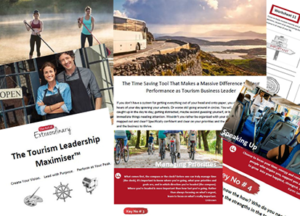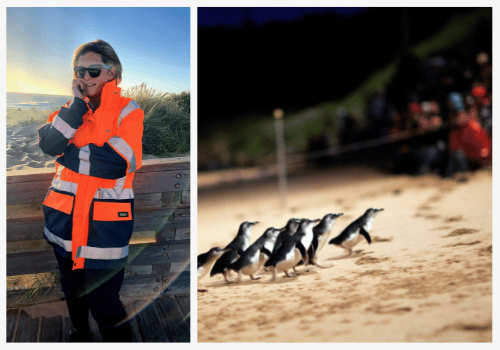
In the last 10 days several incredible women I know, have stood up for themselves and said it’s time.
Time to make a move. Leaving leadership roles they have been in and loved. Yet because of up-line difficulties and challenges, have decided it’s time to move on.
People challenges are normal (we’re all human after all), however, it’s really crucial to understand the importance of whom you surround yourself with day after day, each week and month after month. The years add up and so compounds the misery and pain of being somewhere when you are not valued, appreciated or even respected.
Leopards can’t change their spots, yet humans can become more self-aware. A human can tweak, improve and change their own behaviour IF they want and are prepared to work to.
However, what happens if despite your own best efforts & intentions you’re not seeing or experience any change in others? And there needs to be changed to stay?
Honestly have been there myself and it was so heartbreaking because I didn’t want to leave. I loved what I did, the team, the clients and the day to day job role. Yet, what happens when you have those personality clashes? What happens when people simply don’t get on? And what if it’s more than that, it seems bigger than that. There’s no respect, atrocious communication, and no recognition. These are some of the key reasons why people leave. Not the pay.
Firstly you need to understand why there will be issues and often it’s managing up or across where the conflict can seem more dramatic. You know, you don’t get on and it’s just not working. Rather than saying it’s me, not you, or you not me…
Here are a couple of things that will be at play, that you need to know about.
1) Personality types.
These are the innate personality type. We’re born with them. We can evolve and our muscles may be shaped and influenced by experience, age, and awareness. However innately, they can still be innate! Some of them are used in the basics of the well-known Myers Brigg personality test, originally coming from theories from C.G.Jung.
Whilst some of these personality types or metaprograms (the mental processes which manage, guide and direct other mental processes) are well known, some are less so.
You may already know Introvert and Extrovert. The Introvert, needing space and energy to re-charge and re-fuel themselves (they get their energy from within), whereas the Extrovert loved to be around others and re-charges when in the company of others. Never mistake shyness as an introvert. They are different.
One of my favourites is Judger and Perceiver! The Judger prefers more structure and a decided lifestyle or environment. Where-as the Perceiver is all about flexibility and adaptable environment and lifestyle.
Another favourite is the Thinker and the Feeler! This one is key to how we like to make decisions. The Thinker will put more weight and energy towards objective principles and impersonal facts. The Feeler puts more weight and energy towards people concerns and the people involved.
This one I’ve found particular challenge and my biggest growth area in business because I’m all about the people and feel and respond with a great deal of emotion.
Years ago, a colleague of mine was classic Thinker – the biggest of issues seemed to slide off – like water off duck’s back, she wouldn’t get that riled up or emotionally involved, whereas I’d have to fight back the tears and emotional responses. Once we learned this one, about each other, we were far more understanding of either the lack of emotional investment or the extensive emotion.
Another innate personality type is Matcher and Mismatcher. Your Mismatcher will want to throw a spanner in the works every time, wanting to contradict you, put other ideas and often the opposite thoughts into the picture. Whilst the Matcher will happily go along with the team, agreeing and not be conflicting with the majority.
Another goodie is the Internal and the External. The Internal has an internal check system, they tend to get on with things more and rely on their own internal gauge, whereas the External, will want a second opinion, seek out other ideas, want to double check before going ahead with things. An external can be a crazy micromanager when it’s not in check. Whereas the internal will expect you to have that same or similar sense of internal check and trust.
So you need to consider what’s going on innately.
FYI – there are around 20 of these meta-programs, so lots at play, however even a bit of understanding a few will have you miles attend of the majority.
2) Values
This is what a person thinks is important. Now, this can be far ranging and broad, however, to give you a glimpse into this, someone that pays less attention to connection (often unconsciously) will be less likely to be interested in the morning chitter chat, finding out about your weekend and really doesn’t give a toss about your golf handicap or your youngest child’s latest escape. Someone that pays less attention to health, won’t prioritise that as important for themselves or the team. Hence fitting it into the weekly schedule won’t happen and coke & pizza will end up the food at the next team meeting. And oddly enough health needs to be the barest of baselines for a great high-performance team to work and do well.
If someone doesn’t value growth, then what happens to the business in terms of growing and evolving, taking feedback and learning? It stagnates, slows down and heads backward. This impacts creativity and innovation. Imagine if it could instead be about progress, possibility, opportunities…. You get the picture hey!
So back to dealing with those difficult owners / senior leaders/business partners or directors.
What happens when you just cannot see eye to eye and you dislike their style of leadership? Not to mention the results and outcomes they’re getting…?
You have what’s commonly called a leadership misalignment. Values are out of alignment, you won’t be prioritising the same things in a personal or professional relationship. There will be conflict in the business relationship too.
And more than likely you’ll be singing on some level or other with innate personality type too.
You’ll be wondering at this point, great, well what do I do?
1) The person with the most behavioural flexibility wins.
Be adaptable, see things from other perspectives. Change your own behaviour, you cannot change theirs. Only they can be responsible for their own actions.
2) Stop taking it personally.
OK, it’s not personal, it’s people. Get to know and learn about people. How they think, act and behave, learn the patterns. Understand what makes them tick.
3) Change the meaning that you give things.
Yes, really, become the meaning maker. And what you first think someone said or meant, consider you may have misconstrued it, so look at in a different light. Reframe it.
Once you’ve given it your best shot. And I mean absolutely best shot, you’ve really tried to understand what is going on (from every angle), you’ve worked hard at making sure you’re giving your own best, given it everything…
Then if and when, you’re not seeing changes, experiencing differences, then make the decision.
Enough is enough.
It’s time.
Be courageous.
Be brave.
Leave with your head held high and make the move.
It’s your time to fly higher.
Never underestimate your potential or the value you bring to an organisation. Be with and surround yourself with people who see that value and potential. Make sure they cherish and encourage it. Stay well clear of those who discourage and disregard the importance of people over profit. And avoid those that attempt with every conversation, during meetings or with the lack of communication to destroy people.
That’s not Leadership. It’s ego at its absolute worst. And it’s usually unconscious or learned behaviour because they do not have different ways to communicate.
I do choose to believe people are doing the best they can with what they’ve got and learned.
They’ve just likely never learned any better (from when they were children) or different strategies for communicating with people, dealing with challenges, handling the stress etc. (as they’ve stepped into leadership roles).
So now, it’s your time to fly.
What’s next? The world is your oyster! Be brave and remember you have an enormous amount of greatness to share with a new team, with a new business or organisation.
It’s definitely your time now. Lift off to greatness and fly high.
Genevieve “Fly High” Matthews



